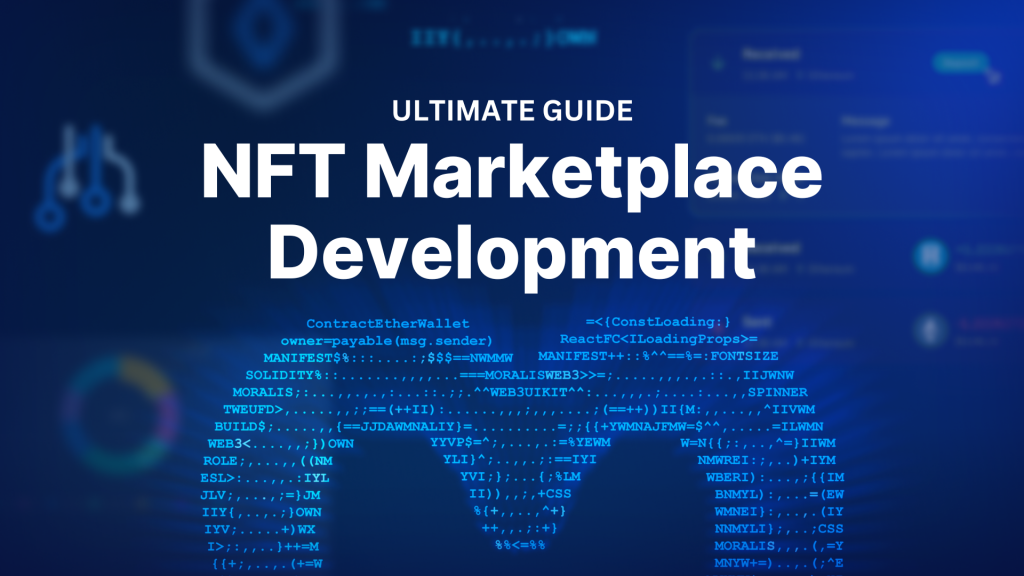
Experts project the NFT market size to grow around 34.31% by 2030. As you can imagine, this brings countless opportunities to NFT artists, creators, and developers. Would you like to tap into the NFT space by building and launching your own NFT marketplace? If so, you’ve come to the right place! Read on as we explore the ins and outs to NFT marketplace development!
Overview
We’ll start this NFT marketplace development guide by covering some fundamentals regarding marketplace development for non-fungible tokens. As such, we’ll first ensure you know what an NFT marketplace is. Next, we’ll look at the typical architecture of an average NFT marketplace. This is where you’ll also have a chance to learn how such a Web3 platform works/operates.
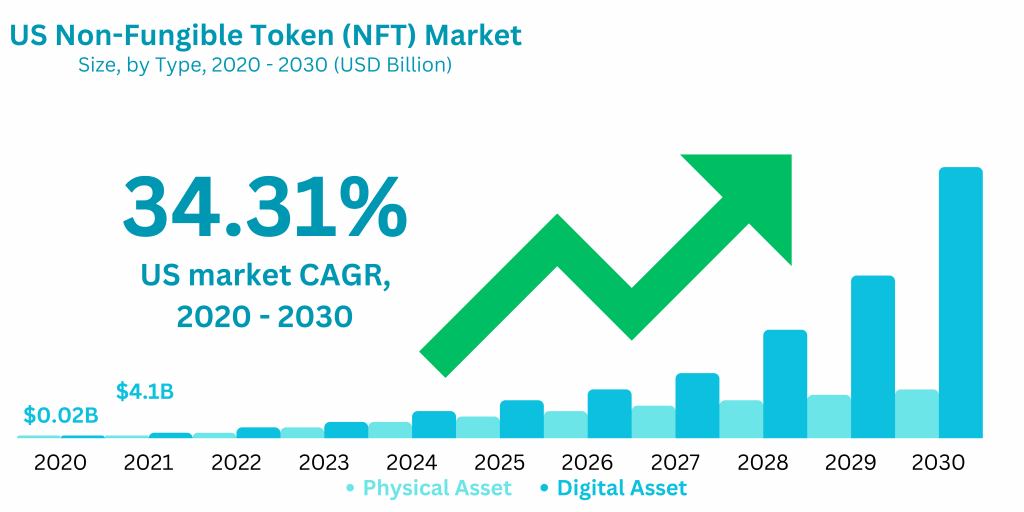
To help you decide whether or not you should get started with NFT marketplace development, we’ll quickly compare these next-gen marketplaces with traditional marketplaces. Nonetheless, you’ll learn how much it costs to build an NFT marketplace – often an overlooked aspect. We’ll conclude our first section by covering some essential features your NFT marketplace should include.
Then, we’ll take a closer look at NFT marketplace development tools. Among other invaluable shortcuts, this is where you’ll find out about Moralis’ NFT API. We’ll also provide you with sort of a “roadmap” or steps you need to take in order to tackle NFT marketplace platform development.
As for the final part of this guide, we’ll focus on NFT marketplace development with Moralis. Hence, you’ll learn more about a wide array of tools this ultimate Web3 API provider offers. After all, aside from Moralis’ NFT API, other powerful Web3 APIs allow you to save time and resources when building an NFT marketplace.
Last but not least, we’ll list some invaluable resources that will help you get the most out of this NFT marketplace development guide.
NFT Marketplace Development – Getting Started
We are starting this NFT marketplace development guide with the basics, and we’re kicking things off by looking at what an NFT marketplace is. That said, if you already know the basics, feel free to skip these initial sections and jump straight into the ones providing you with the most knowledge.
So, what is an NFT marketplace? Let’s find out!

What is an NFT Marketplace?
An NFT marketplace is the digital realm where art, collectibles, and even virtual real estate are reborn as unique, blockchain-verified tokens. In this futuristic bazaar of the internet age, “NFT” stands for “non-fungible token,” a term that denotes each item’s indivisible, one-of-a-kind nature. Furthermore, each NFT represents a specific item. Its ownership and transaction history are recorded securely on the blockchain, making it tamper-proof and easily traceable.
The NFT marketplace, driven by the principles of decentralization and blockchain technology, has started to revolutionize the way we appreciate, buy, and sell digital assets. It’s a digital playground for collectors and speculators, bridging the gap between the physical and digital worlds. And the most remarkable aspect isn’t just what you can acquire but the innovative, decentralized ethos that underpins it all.
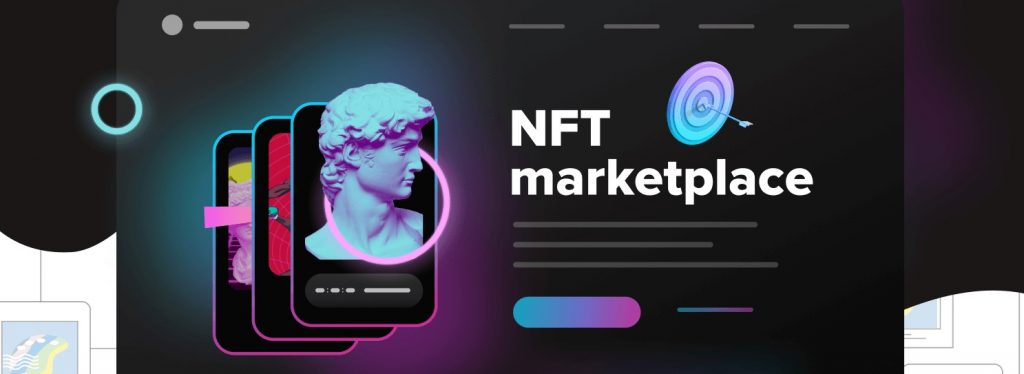
NFT Marketplace Architecture – How Does it Work?
First of all, it’s important to point out that a basic NFT marketplace doesn’t need to support the actual “creation” process of an NFT. However, most of the leading NFT marketplaces do offer that feature. So, in that case, creators, artists, and content developers upload their unique creations to these platforms, turning their work into NFTs. These tokens are then made available for purchase, trade, or auction. Collectors and enthusiasts, in turn, have the opportunity to acquire these digital marvels and have undeniable proof of ownership and authenticity.
In addition to creators, anyone owning an NFT can use an NFT marketplace to create an auction or sell their NFT at a fixed price. If the NFT creation function is not available, then the platform exclusively focuses on users listing, selling, and buying NFTs.
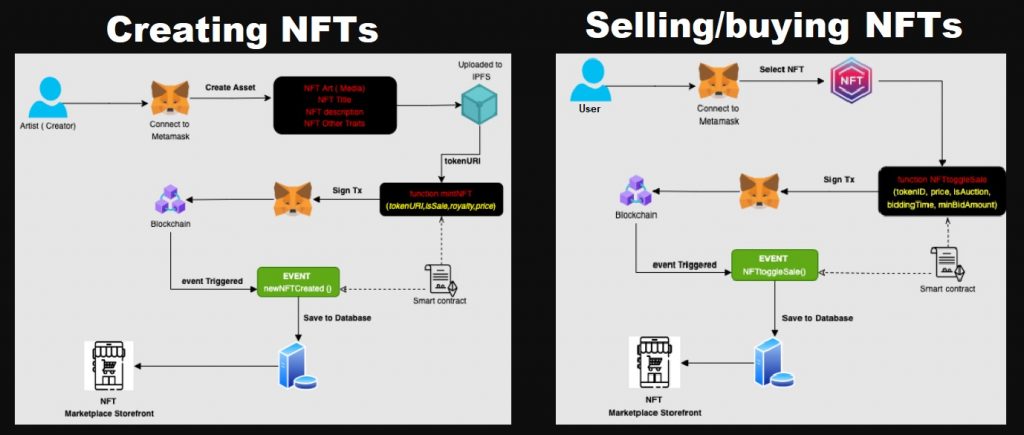
Architectural Components Forming an NFT Marketplace
It’s important to be aware of essential components you might interact with during your development process. So, here are some essential architecture components:
- Marketplace Dapp: At the core of any NFT marketplace is a web application that serves as the user interface. Users visit this platform to browse, purchase, and trade NFTs. The marketplace dapp usually comprises both the client side (user-facing interface) and the server side (where the core functionality and database management occur).
- Web3 Wallets: Users need Web3 wallets to participate in NFT marketplaces. These wallets serve as secure repositories for their NFTs and digital assets. They facilitate the management and transfer of NFTs, as users can send and receive NFTs from these wallets.
- NFT Metadata: NFTs are more than just digital files; they come with accompanying metadata. This metadata includes details about the NFT, such as its title, creator, date of creation, and description of the asset. Metadata provides users with essential information about the NFT, and it’s critical for ensuring the authenticity and provenance of the asset.
- Smart Contracts: Smart contracts play a pivotal role in NFT marketplaces. They are self-executing agreements that automatically facilitate and enforce the transfer of NFTs upon certain conditions being met. NFT marketplaces often use the ERC-721 and ERC-1155 standards for creating non-fungible tokens. These standards apply to Ethereum and other EVM-compatible chains and, among other things, ensure each NFT is unique and indivisible.
- Blockchain: NFT transactions are recorded on a blockchain, which is a distributed and immutable ledger. The blockchain records the ownership history and provenance of each NFT, offering transparency and security to users.
The great thing about NFT marketplace platform development is that you don’t need to build all of the above components yourself. Of course, you can, but that would be a tedious and rather unproductive path.
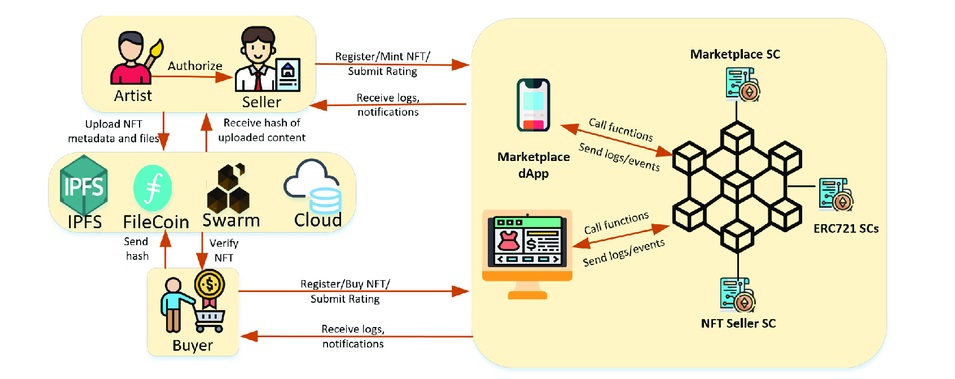
Traditional Marketplace vs. NFT Marketplace
When comparing NFT marketplaces with traditional marketplaces, the former has multiple advantages. The following list covers these benefits and is the one you may use as an inspiration to dive into NFT marketplace development.
- Transparency: NFTs offer complete transparency through blockchain, instilling trust and enhancing payment accuracy.
- Increased Security: Blockchain-backed security protects assets from loss, theft, and scams, ensuring the integrity of digital assets.
- Liquidity: NFTs enjoy rising demand and built-in liquidity, allowing easy asset exchange without waiting for buyers.
- Easy Transfer of Assets: NFT marketplaces provide secure ownership and authentication, enabling asset tokenization and sale.
- Decentralization: NFTs operate on decentralized platforms, eliminating dependence on traditional institutions.
- Instant Payments: Cryptocurrency transactions on NFT marketplaces are quick and private, requiring minimal personal information.
- Decreased Fees: NFT marketplaces charge lower fees without intermediaries, reducing transaction costs.
- Greater Independence: NFT marketplaces are not bound by traditional rules, granting users more flexibility in asset transactions.
- Growth Potential: NFTs and crypto hype attract global investor attention, fostering rapid marketplace expansion.
- Traceability: Blockchain traceability verifies NFT ownership, allowing users to assess uniqueness and value, which is ideal for creators and celebrities.
How Much Does it Cost to Build an NFT Marketplace?
The cost of building an NFT marketplace varies depending on multiple variables. However, if you are a developer and plan on investing your time, the cost can be pretty low. In fact, you can create a basic NFT marketplace by cloning GitLab repositories and using smart contract templates with very little fuss. On the other hand, if you want to build the next OpenSea and need to hire several developers, then the cost can be quite high.

Plus, it all depends on your approach and which of the above-presented components of the NFT marketplace development architecture you plan on building from scratch.
The numbers you can find online range from $50,000 – $500,000. However, we assure you that with the right approach, as the one outlined in this NFT marketplace development guide, you can go live with much less, especially if you have some programming skills and choose the best tools for the journey.
Here’s also a list of aspects you ought to consider when it comes to the cost of building an NFT marketplace:
- Development team
- Blockchain integration
- Smart contracts
- Security and auditing
- Server and hosting
- Frontend development
- Legal and regulatory compliance
- Marketing and promotion
- Maintenance and updates
Essential Features Your NFT Marketplace Should Include
The essential features every decentralized (non-custodial) NFT marketplace should include are:
- User Wallet Integration: Enable users to connect their Web3 wallets.
- Blockchain Integration/Communication: Ensure seamless integration with a blockchain, such as Ethereum, for transparent and secure transactions.
- Smart Contracts/Smart Contract Integrations: Implement smart contracts for NFT ownership, transfer, and authentication.
- User-Friendly Interface: Create an intuitive and visually appealing UI for easy navigation.
- Search and Discovery: Enable users to search, filter, and discover NFTs by categories, artists, and attributes.
- Secure Payments: Facilitate secure cryptocurrency payments for NFT purchases.
- Listing NFTs: Enables NFT sellers to properly list NFTs.
- Buy Functionality: Enable buyers to buy listed NFTs.
Additional (highly recommended) features:
- NFT minting
- Auction and bidding
- Licensing and royalties
- Community and social features
- Security and auditing
- Legal and compliance
- Customer support
We recommend you get further acquainted with such features and workings we just mentioned by exploring leading examples of NFT marketplace platforms:
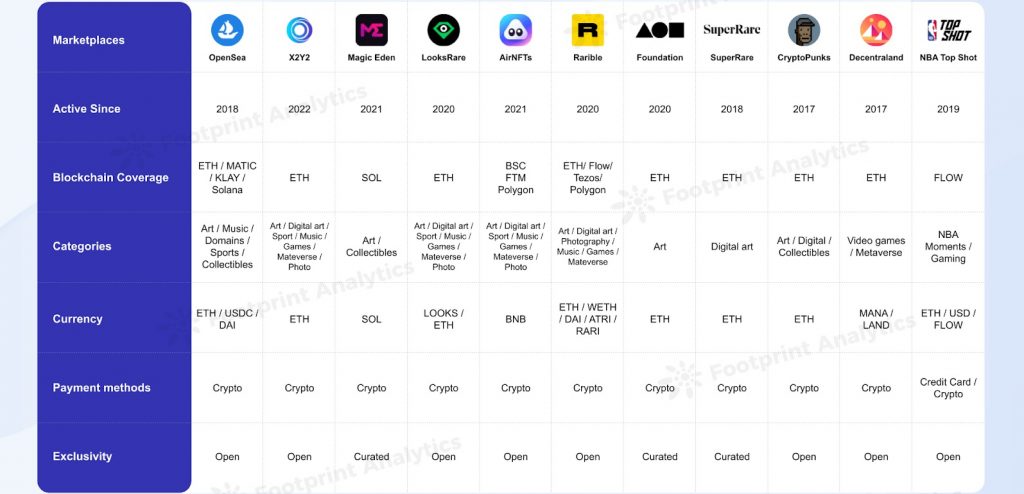
NFT Marketplace Development Tools
This NFT marketplace development guide wouldn’t be complete without at least touching base with the NFT marketplace platform development tools. After all, even if you plan to outsource the entire plan and execution, you should still know a thing or two about the required “picks and shovels”.
- Blockchain Explorer APIs – APIs provide detailed information about blockchain transactions and smart contract interactions. Here, Moralis’ Web3 APIs are the go-to solutions, with the NFT API leading the pack.
- Ethereum Smart Contracts – Smart contracts, especially those following the ERC-721 and ERC-1155 standards, are fundamental to NFT marketplace development. Platforms offering reliable smart contract templates, such as OpenZeppelin, can be of immense value.
- Smart Contract Programming Languages – Solidity and Vyper (smart contract languages) are programming languages for creating smart contracts.
- Web3 Wallets – Crypto wallets, such as MetaMask and Trust Wallet, are crucial for users to manage their NFT collections and make secure transactions within the marketplace. So, make sure your NFT marketplace supports the most popular Web3 wallets. Moralis’ Web3 Auth API can help you with that.
- Decentralized Storage Solutions – Solutions like IPFS ensures decentralized storage of NFT metadata and content.
- Web3 Libraries – Web3.js and Ethers.js provide the necessary tools for interacting with blockchain networks, including sending transactions, reading data, and integrating with smart contracts. However, a far better alternative to this is Moralis’ Streams API.
- Cloud Services – Use cloud services (AWS, Azure, etc.) as scalable hosting and data storage, accommodating the large volumes of data NFT marketplaces.
- NFT Marketplace Templates/Boilerplates – These can jumpstart your development process.
- Frontend and Backend Programming Languages and Frameworks – JavaScript, NodeJS, and Python will do the trick; however, you have several other options.
- Dapp Development Frameworks – Frameworks like Truffle and Hardhat simplify smart contract development, testing, and deployment.
The Best NFT Marketplace Platform Development Tool
The exact scope of which of the above-presented tools you should focus on depends on your approach to NFT marketplace development. However, if we were to pinpoint one tool every developer should use, it would be the Moralis NFT API.

Diving deeper into the specifics of this powerful tool exceeds the scope of this NFT marketplace development guide, so make sure to learn more about it by following the above “NFT API” link. Still, you can see some of the essential data you can get using this API:
- NFT balance
- NFT metadata
- NFT transfers
- NFT collections
- NFT owners
- NFT market data
- Spam detection
How to Develop an NFT Marketplace Platform: Roadmap
At this point, you know there are too many varying aspects of NFT marketplace development, so we cannot create a tutorial that would serve all purposes. However, we decided to outline some steps you can focus on to get going and hopefully reach the finish line:
- Define Your Niche – Begin by identifying a specific niche for your NFT marketplace, such as digital art, gaming assets, music, or collectibles. Tailor your platform to cater to your chosen audience.
- Select the Right Blockchain Network – Choose a blockchain network that aligns with your project’s needs and consider factors like transaction costs, smart contract robustness, security, scalability, and speed. Also, consider going cross-chain. After all, with the right tools in your corner, you can easily integrate multiple blockchain networks.
- Incorporate Advanced Features – Implement top-notch features to set your NFT marketplace apart. This may include 3D displays, interoperability, social media integration, and more, depending on your project requirements.
- Design an Intuitive User Interface – Develop an engaging and user-friendly interface that facilitates seamless NFT trading. Aesthetic, responsive design, and user-friendly features are key.
- Build IPFS and Database Storage – Construct a secure, immutable database to store user and NFT data. Leverage Interplanetary File System (IPFS) for secure, distributed data storage.
- Integrate Third-Party Services – Integrate essential third-party services, such as payment gateways, crypto wallets, and social media connections, depending on your business needs.
- Create Smart Contracts – Develop smart contracts tailored to your marketplace’s functions, enabling automatic NFT minting and secure transactions.
- Test and Deploy – Conduct rigorous testing to eliminate bugs and issues that could disrupt the user experience. Ensure your platform is thoroughly tested before deployment to ensure a smooth launch.
NFT Marketplace Platform Development with Moralis
Many dapp developers, including those building NFT marketplaces, fall into the trap of reinventing the wheel. As such, they end up wasting a ton of their precious time and money on creating features that could have been implemented with short snippets of code. Fortunately, you can avoid this trap by using Moralis APIs.
Your primary focus should be on the Moralis NFT API. The latter will take care of all NFT-related on-chain data with single lines of code. However, as you focus on covering various features of your NFT marketplace, also make sure to make good use of the rest of Moralis’ Web3 API fleet. For instance, the Auth API will allow you to cover Web3 authentication. This will also take care of Web3 wallet integration of your NFT marketplace. Moreover, you can use the power of the Streams API to incorporate real-time, on-chain notifications with ease.

To access the Moralis API fleet, you just need a free Moralis account, which you can create in seconds. Then, you’ll be able to access your dashboard and create your NFT marketplace project. Your free account will get you far, maybe even all the way. However, in case you need more steam, you can upgrade to a Pro or Business plan at any time.
In case you have any questions or need any help with onboarding, make sure to reach out to Moralis’ 24/7 support!
Resources
Below are some of our past articles and relevant doc pages that will help you create your NFT marketplace without breaking a sweat:
- Best free NFT API
- Getting started with Moralis guide
- NFT API documentation
- How to get verified NFT collections
- How to get all the NFTs owned by an address
- Get NFT owners by its contract address
- How to get NFT Metadata
- How to get all transfers of an NFT collection
- Get lowest price of an NFT
- Identify NFT spam (scam prevention)
- Web3 authentication docs
- Streams API documentation
- Build a Web3 marketplace
- Testnet faucets (for testing)
- Moralis nodes
- “Built with Moralis” program
- Moralis Web3 documentation
- Web3 dictionary
NFT Marketplace Development – Key Takeaways
We covered quite a distance in today’s NFT marketplace development guide, and here are the key takeaways:
- NFT marketplaces are digital platforms where unique, blockchain-verified tokens representing various digital assets (NFTs) are bought, sold, traded, and sometimes even created.
- Most NFT marketplaces revolve around these key functions: NFT creation, listing, purchase, and ownership transfer.
- The NFT marketplace architecture includes a dapp, Web3 wallets, NFT metadata, smart contracts, and blockchain for transparency and security.
- NFT marketplaces offer many advantages, including transparency, security, liquidity, easy asset transfer, decentralization, instant payments, lower fees, greater independence, growth potential, and traceability.
- NFT marketplace development tools include blockchain explorer APIs, smart contracts and smart contract languages, Web3 wallets, decentralized storage solutions, Web3 libraries or the Moralis Streams API, cloud services, NFT marketplace templates, and classic programming languages and frameworks.
- The Moralis NFT API is the best NFT marketplace platform development tool, and you can access it with a free account.
- The NFT marketplace development roadmap includes:
- Define your NFT niche
- Choose the right blockchain network
- Design an intuitive UI
- Build IPFS and database storage
- Integrate third-party services
- Create required smart contracts
- Thoroughly test your platform before the launch
In case you feel like you are not yet ready to start building and want to learn more about Web3 development, make sure to visit the Moralis blog. Also, consider enrolling with Moralis Academy for a more professional approach to your Web3 education.

What is ERC-4337? Full EIP-4337 Guide